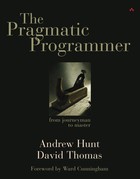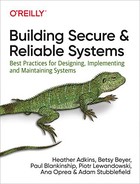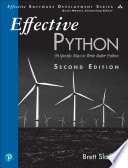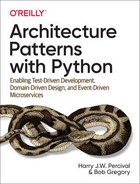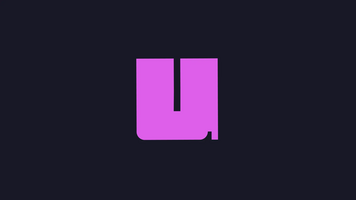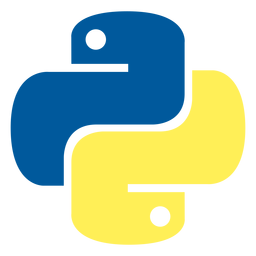
The Python ecosystem has long been characterized by a proliferation of package management tools, each addressing specific pain points but often creating new ones in the process. From pip to poetry, from pipenv to conda, developers have had to navigate an increasingly complex landscape of dependency management solutions. However, a new player has emerged that's fundamentally changing the game: uv, a Python package and project manager written in Rust that promises 10-100x performance improvements over traditional tools.
The Performance Paradigm Shift
When we talk about developer tools, performance often takes a backseat to functionality. After all, if a tool works correctly, does it really matter if it takes 30 seconds instead of 3? The answer, as it turns out, is a resounding yes. The psychological impact of waiting for package installations, dependency resolution, and environment setup compounds over time, creating friction that subtly but significantly impacts developer productivity and satisfaction.
The speed improvements offered by Rust-based Python tools aren't just about raw performance—they represent a fundamental shift in how we think about tool design. When a task that previously required a coffee break now completes before you can blink, it changes your entire workflow. Developers report being initially confused by uv's speed, assuming they had made an error because the process completed so quickly.
Beyond Speed: The Consolidation Advantage
What makes uv particularly compelling isn't just its performance, but its ambitious scope. Rather than being yet another tool in an already crowded ecosystem, uv aims to replace multiple tools with a single, cohesive solution. This consolidation addresses one of Python's most persistent pain points: the cognitive overhead of remembering which tool to use for which project.
The current state of Python tooling requires developers to maintain mental models for multiple different workflows depending on how a project was configured. This fragmentation isn't just inconvenient—it's a barrier to entry for newcomers and a source of ongoing friction for experienced developers.
The Script Management Revolution
One of uv's most innovative features is its approach to script management. The ability to declare dependencies inline within Python scripts and execute them in isolated environments addresses a common but underserved use case. This feature bridges the gap between quick scripts and full projects, providing a middle ground that many developers didn't realize they needed.
The traditional approach to script dependencies often involved either polluting the global Python environment or going through the overhead of creating a full project structure. uv's inline dependency metadata support offers a third way that maintains isolation while preserving simplicity.
The Rust Advantage in Developer Tools
The choice to implement Python tooling in Rust isn't arbitrary—it reflects deeper architectural advantages that extend beyond raw performance. Rust's memory safety guarantees, excellent concurrency primitives, and mature ecosystem for network operations and serialization make it particularly well-suited for the kinds of operations that package managers perform.
However, this approach also introduces interesting philosophical tensions. Python's design philosophy emphasizes simplicity and readability, while Rust-based tools often bring Cargo-style conventions that may not always align perfectly with Python's more flexible project structures. This tension manifests in practical ways, such as challenges with complex project layouts or expectations about where virtual environments should be stored.
Enterprise Adoption Considerations
While individual developers are rapidly adopting uv, enterprise adoption faces different challenges. Security scanning tools, CI/CD integrations, and corporate policies often lag behind the bleeding edge of tooling innovation. The dependency on external security tools like Snyk for vulnerability scanning can create adoption blockers in enterprise environments where security compliance is non-negotiable.
Additionally, the venture capital backing of Astral raises legitimate questions about long-term sustainability and potential changes in direction. Enterprises that have been burned by open-source projects changing licensing or business models are naturally cautious about adopting tools from VC-backed startups, regardless of their current open-source status.
The Learning Curve Paradox
Interestingly, uv faces a unique documentation challenge. Many of its users are either experienced Python developers who understand the problems it solves, or newcomers who don't yet understand why those problems matter. Creating documentation that serves both audiences—explaining both the "what" and the "why"—requires careful balance.
For newcomers, the proliferation of Python package management tools can be overwhelming. They may not understand why they need dependency isolation or version pinning because they haven't yet experienced the pain points these features address. This creates a chicken-and-egg problem where the benefits of sophisticated tooling aren't apparent until you've encountered the problems they solve.
Resource Management and Global State
One persistent challenge in Python tooling is the tension between convenience and isolation. Some developers prefer the simplicity of global package installations, where running pip install requests once allows them to import requests in any script for years. This approach trades reproducibility and isolation for cognitive simplicity—a trade-off that makes sense for certain use cases and user profiles.
The disk space efficiency offered by uv's global cache represents an interesting middle ground, providing isolation when needed while avoiding the storage overhead that can accumulate with project-specific virtual environments.
Looking Forward: The Ecosystem Evolution
The success of uv and similar Rust-based Python tools suggests we're witnessing a broader evolution in the Python ecosystem. The willingness to "reinvent the wheel" when focused on specific performance and usability goals has produced tools that are genuinely order-of-magnitude improvements over their predecessors.
This trend raises important questions about the future of Python tooling. Will we see continued fragmentation as new tools emerge, or will consolidation around a few high-quality solutions eventually occur? The answer likely depends on whether tools like uv can successfully balance innovation with stability, and whether the Python community can converge on common standards and conventions.
The Pragmatic Revolution
What's perhaps most significant about uv's emergence isn't just its technical capabilities, but what it represents about the maturation of the Python ecosystem. The willingness to completely rethink fundamental tools when the benefits are clear enough suggests a healthy ecosystem that prioritizes developer experience over backward compatibility for its own sake.
The rapid adoption of uv, despite the Python community's historically conservative approach to tooling changes, indicates that the pain points it addresses are real and significant. When developers are willing to learn new tools and workflows for the promise of better performance and usability, it signals that the status quo was genuinely inadequate.
As the Python ecosystem continues to evolve, tools like uv represent more than just incremental improvements—they're harbingers of a more performance-conscious, user-centric approach to developer tooling that may well define the next decade of Python development.
